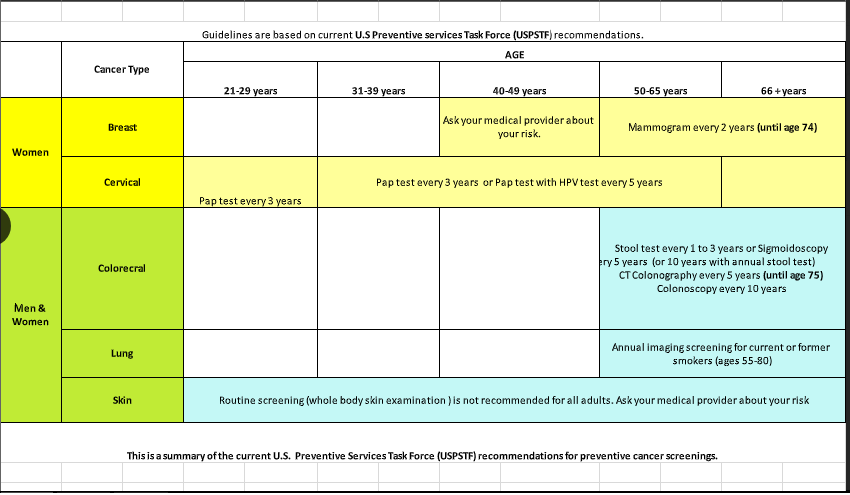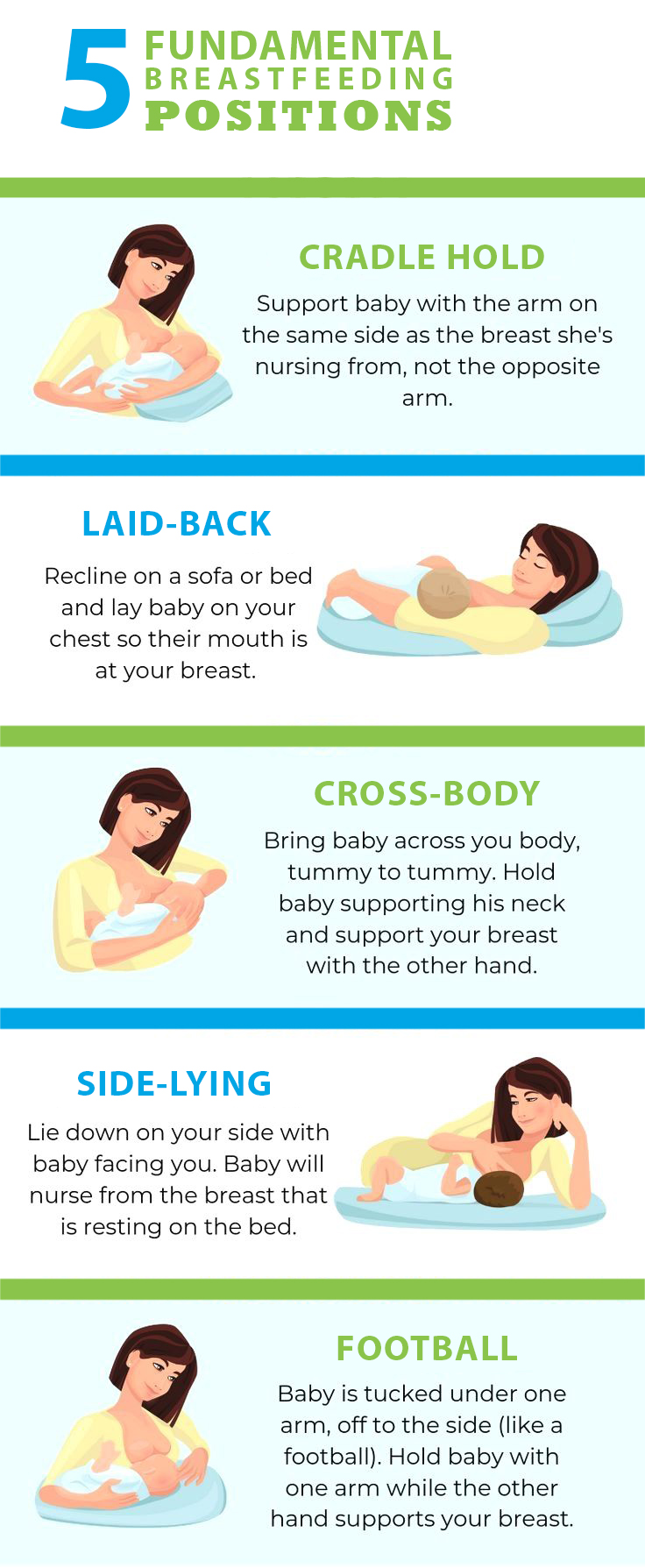50 Years Young!
Women spend a lifetime looking after their families and often ignore their own wellbeing. It is important for women to take care of themselves. As time passes, our bodies change. Each one of us is unique and hence aging touches us in different ways. Thanks to the growing awareness and advances in medicine and nutrition, we are seeing higher life expectancies and healthier lives(average life expectancy of a US woman is 82 years).To be healthiest,we need to know our family medical history, understand our body changes, integrate beneficial habits into our lifestyle and keep up with routine preventive health screenings.
50s Body Basics:
Menopause:-Menopause:-For most women, her 50s mean menopause. But it is not really a pause at all. Menopause is more like a shift. Your hormone levels shift and change, and your body shifts out of its childbearing years into a new state of balance. Before that, you may experience hot flashes and night sweats, upset sleep and stress, mood swings, irritability, or depression.
Due to drop in estrogen, you may also notice other changes. Reduced vaginal lubrication can make sexual intercourse difficult, even painful, and increase your risk of urinary and vaginal infections.
Estrogen dips also cause you to lose bone density – putting you at risk of osteoporosis – and have been linked to a gain in belly fat.
Belly fat, in turn, may boost your risk of heart disease, diabetes, and cancer. To lose this fat, you may need to bump up your workouts and lower your caloric intake.
Your risk of colorectal cancer increases during this decade, so screening becomes crucial.
Weakened pelvic muscles may play a role in urination issues like incontinence and in some women a condition called pelvic prolapse. Women who are obese or have had children are more susceptible.
TOP CONCERNS
Other than Menopause, the main health concern are:-
Heart disease
Heart disease is the leading killer of both men and women. In women, the condition is responsible for about 29% of deaths, reports the CDC. Although more men die of heart disease than women, females tend to be underdiagnosed, often to the point that it’s too late to help them once the condition is discovered.
The earlier people adapt healthier behaviors, the lower their overall risk for heart disease or stroke outcomes.
Osteoporosis
Osteoporosis threatens 44 million Americans, of which 68% are women, reports the National Osteoporosis Foundation. Osteoporosis is largely preventable. The behaviors that women develop in their childhood and early adult years play a significant role in the development of the disease. That’s because bodies build up most of bone mass until age 30. Then new bone stops forming and the focus is on maintenance of old bone. It is never too late to keep bones strong and avoid fractures. Your body will do what it can to repair bone damage, but you have to provide the tools for it, such as adequate calcium consumption and weight-bearing physical activity
When you age, your body absorbs your old bone tissue faster than it can create new bone tissue, which makes your bones weaker. This condition is called osteoporosis. The bones become so thin and fragile that they can easily break when you fall or sometimes, while you are going about your daily lives. It is estimated that 1.5 million fractures happen every year because of osteoporosis. Women are more susceptible to osteoporosis because they lose more bone mass right after menopause.
Flu/Pneumonia: the elderly are more susceptible to it because the immune system does become weaker with the passing years. It also means that the flu can lead to pneumonia, if not treated on time. The research done by Centers for Disease Control and Prevention, US, believes that 71–85 percent flu-related deaths in occur in people around the age of 65 or more
Diabetes:
In countries like the USA, more than 25 percent people over the age of 60 have this health condition. When a person has diabetes, they have a very high level of blood sugar, which leads to complications like damage to the kidneys, nerves, eyes as well as stroke or heart disease. Some of the early signs to look out for are fatigue, extreme thirst or hunger, blurry eyesight, and a frequent need to urinate.
Incontinence: Women over the age of 50 are more likely to have urinary incontinence. This is because the pelvic muscles lose strength, and aren’t able to control the bladder as well as they did before. Some of the other reasons for incontinence after menopause include less elasticity in the vaginal tissue and thinning of the lining of the urethra. This leads to a few types of incontinence: stress incontinence, which means that you leak out some urine when you laugh, sneeze or cough; urge incontinence, when the need to urinate comes very suddenly; nocturia, where some women feel the need to use the bathroom several times at night; and, painful urination, which may happen because urinary tract infections that some may get more frequently after menopause.
Breast Cancer
It is second to lung cancer as the leading cause of death for women..
The American Cancer Society lists the following as risk factors for breastcancer:
American Cancer Society recommends controlling your weight, exercising, quitting smoking, and talking to your doctor about your risk and appropriate screening for breast cancer.
- “Just because your mother didn’t have breast cancer, it does not mean you are immune to this problem,”. At the same time, it’s also important to note that some women who have one or more risk factors never get breast cancer.
Depression / Anxiety
Depression appears to affect more women than men. The National Institute of Mental Health reports that about 12 million women are affected by a depressive disorder each year compared to about 6 million men. Many women suffer silently as they battle with depression, which also impairs their daily functioning. Post-menopausal women are more prone to suffering from depression because when there is a dip in the level of estrogen in the body, mood-regulating brain chemicals like norepinephrine, dopamine and serotonin also get disrupted.
Anxiety is one of the least talked about health issues that women over 55 suffer from. Often undiagnosed or undertreated, studies in the US show that 18 percent of people over 60 suffer from anxiety issues. Women have more anxiety disorders than men due to chemical differences, hormonal changes and different responses to neurotransmitters. The affected person cannot stop worrying about a problem, situation or even the future, to the extent that sometimes it can hamper day-to-day living. Anxiety can even lead to panic attacks, high blood pressure, palpitations, dizziness and insomnia. If you suffer from any of these symptoms or suspect that you have an anxiety disorder, do not hesitate to reach out for help.
50s: healthy habits
Nutritional needs of your changing body.
As you pass through menopause, your changing body may require fewer calories. At the same time, you might contend with a slowed metabolism and become more prone to belly fat. Switch out high-fat foods for lower-fat options, and slice into leaner sources of protein, like chicken, fish, beans, or quinoa. Give your body an antioxidant advantage by increasing your intake of fruits and vegetables, and support healthy cholesterol and digestion with plenty of fiber.Cut back on salt and processed foods-aiming for 1500mg of salt(halfteaspoon/day).Eat colorful foods. It’s important for women over 50 to get plenty of fruits and vegetables. And eat more fatty fish (like salmon) to get heart-healthy omega-3 fatty acids. Learn to love whole grains, lentils, and skinless lean protein. Treat yourself to sweets, but only occasionally. When you use oils, lean toward the good ones,like extra-virgin olive oil.
Get fit
50-something fitness should focus on maintaining a healthy weight, supporting strong bones, and building muscles to boost a lagging metabolism. Cardiovascular exercise will help keep your heart strong, but you also need flexibility and muscle strengthening training like yoga or Pilates to help keep your joints mobile. You also need strength training or a weight-bearing workout like climbing stairs, jogging, lifting weights, to help bump up your calorie burn and support your bones and muscles. Keep up with regular physical activity, and you’ll be more likely to sleep well and to handle stress.
Medications:
Your first bone density test may occur in your 50s. Your mid-60s is when you are at a greater risk for osteoporosis, so you should work now to fortify and protect your bones. If you cannot reach your daily calcium quota of the recommended 1,200 mg from the foods you eat, consider supplements. And pair your calcium with vitamin D to get the full benefits. Some vitamin D can be found in foods you eat, but you may need to take supplements to get the 800 IU of vitamin D per day that is recommended for osteoporosis prevention. You could also spend about 5 to 15 minutes outside, 2 or 3 times a week, to soak up vitamin D from the Sun. Generally always wear sunscreen to help prevent skin damage that can lead to skin cancer. You can also add B12 supplements to your diet.
Mental health
Meditate, pray, visualize your day. Read something that inspires you. Focus on self-renewal.#Set aside quiet time every morning. Be optimistic. Take time to understand what you want out ofyour life. Find thepurpose and meaningin your life. Then spread the joy to others.#Have fun. Go bungee jumping, rock climbing, backpacking, skiing, and dancing,whatever makes you happy. Act like you feel, and you’ll feel youthfulness. Find a creative outlet. It helpsto prevent depression and depression affects memory. Having a creative outlet helps stimulate your mind. Take up painting. Create a wonderful garden. Engaging your creativity stimulates your brain more than reading, and certainly more than TV. Eliminate clutter. Fill your home with great music, books, and friends. Withdraw and recharge when you need to. Associate with positive-focused people. They will not drain your valuable energy with complaints. They will help you pursue the best that life has to offer.
Maintain proper Hydration
Skin care regimen should include moisturizing creams
Ensure adequate Sleep Maybe you got along with four hours a night when you were 40, but your body can’t take that abuse when you’re older.
Quit smoking
Stop or limit alcohol
Reach and maintain healthy weights.
Maintain protection from the Sun
Screening check-ups
Your 50s: checkup checklist
- Bone density test:You may get your first bone density test during your 50s. Some people who fall into particular risk categories may need one sooner or more regularly. Taking certain medications may speed bone loss, and certain medical conditions can compromise bone density as well. Ask your doctor if you are concerned about osteoporosis, especially if it runs in your family.
- Diabetes screening:If you are in your 50s, you may be at risk for type 2 diabetes. Your doctor can screen your risk by testing your levels of Hemoglobin A1C (a blood test that reflects your average blood glucose levels over the last 3 months) or your blood glucose levels. How often you need to be screened for diabetes will depend on your risk of diabetes. If you are overweight, your risk of diabetes will probably be higher and you should be tested earlier and/or more often. Ask your doctor how often you should be screened for diabetes.
- Blood pressure and cholesterol:Anytime you go in for any health care visit, your blood pressure will be taken, and you should get a cholesterol work-up every 1 to3 If you fall into certain risk groups, your doctor may screen your levels more frequently. You may be at risk if you have diabetes or a large waist circumference, or if you smoke or are inactive or eat an unhealthy diet.
- Colorectal cancer screening:A Fecal Occult Blood Test (FOBT) helps to identify polyps before they become cancerous. When caught early, 90% of colorectal cancers can be cured. This test should be conducted every 2 years. A flexible sigmoidoscopy or double-contrast barium enema may be done every 5 years as an alternative to the FOBT. Another screening option is a colonoscopy, which should be done at 50 and every 10 years after. If you have certain risk factors, you may need this test every 1 to 5 years.
- Pap test and pelvic exam:You should be having routine pelvic exams and Pap tests every 2 to 3 years. Pap tests screen for cervical cancer, while the pelvic exam allows your health care provider to examine your cervix and vagina and to get a sense of the health of your uterus. Your health care provider might also look for signs of infections.
- Breast exam:Breast cancer is a very common cancer among women. Your health care provider may do an exam when you go in for your Pap test and pelvic exam. If not, ask your doctor if you should have a clinical breast exam and, if so, how often? You should also become familiar with the look and feel of your breasts so you know what’s normal for you. If you fall into a high-risk category for breast cancer, your doctor may suggest you have a mammogram every year or so. Otherwise, mammograms should be done every 2 or 3 years when you are in your 50s.
- Skin check:Anyone at any age can develop skin cancer. In addition to minimizing your risk with healthy sun habits, your health care provider should do a thorough skin check annually to screen for new or changed moles or marks. You can also do a skin check yourself (or with a helpful partner) each month.
- Dental check-ups:Visit your dentist for preventive check-ups and routine cleanings. The frequency of visits will really depend on individual needs, though most authorities on the subject recommend at least once or twice a year.
- Eye exams:Even if your vision is 20/20, you should have your eyes examined every 1 to 2 years. After all, optometrists check for other things besides how good your vision is – like signs of glaucoma. If you have a condition like diabetes or high blood pressure, or a family history of vision problems, your optometrist will let you know if you need more frequent eye exams and check-ups.
- Immunizations:
- Get shots to protect you from measles, mumps, and rubella (MMR)if you’ve never had the vaccination before.
- The tetanus, diphtheria, and pertussis (Tdap)vaccine is recommended for everyone, once in adulthood (you may have received vaccinations against these in childhood). The Td (tetanus and diphtheria) vaccine is recommended every 10 years.
- Each year, get the influenza vaccine.
- Consider being vaccinated against meningitisand hepatitis A and B.
U.S Preventive Guidelines-

Guidelines are based on current U.S Preventive services Task Force (USPSTF) recommendations.
 There are many positions that a mother can use to achieve all the criterion required for effective breastfeeding, as mentioned above. However, the best positions can be separated into five categories that are mentioned in the picture provided below.
There are many positions that a mother can use to achieve all the criterion required for effective breastfeeding, as mentioned above. However, the best positions can be separated into five categories that are mentioned in the picture provided below.


 These cysts are actually immature follicles. In normal menstrual cycle, follicle develops and grows to form an egg which ovulates, but in PCOS follicular development is arrested at early stage due to disturbed ovarian function and they form multiple cysts
These cysts are actually immature follicles. In normal menstrual cycle, follicle develops and grows to form an egg which ovulates, but in PCOS follicular development is arrested at early stage due to disturbed ovarian function and they form multiple cysts
 The Sun Protection Factor (SPF) indicates how much longer an individual can be in the sun before being sunburnt when using a sun protection product than if he/she was not using it. It measures the protection only against UVB rays and not UVA. For instance, a fair skinned person who would normally start to feel the effect of sunburn after 10 minutes in the sun would receive 15 times the protection with an SPF 15 product i.e. 150 minutes of protection. If a person with darker skin takes longer to get sunburnt without protection, say 20 minutes, an SPF15 would give him/her 300 minutes of protection.
The Sun Protection Factor (SPF) indicates how much longer an individual can be in the sun before being sunburnt when using a sun protection product than if he/she was not using it. It measures the protection only against UVB rays and not UVA. For instance, a fair skinned person who would normally start to feel the effect of sunburn after 10 minutes in the sun would receive 15 times the protection with an SPF 15 product i.e. 150 minutes of protection. If a person with darker skin takes longer to get sunburnt without protection, say 20 minutes, an SPF15 would give him/her 300 minutes of protection.
 to kidney disease. The incidence of Chronic Kidney Disease (CKD) is at least as high in women as in men and may even be higher. Studies have shown that CKD affects approximately 195 million women worldwide and is currently the 8th leading cause of death in women. There is a risk of morbidity associated with CKD and in many cases it progresses towards kidney failure, necessitating kidney replacement therapy i.e. dialysis and/or kidney transplantation.
to kidney disease. The incidence of Chronic Kidney Disease (CKD) is at least as high in women as in men and may even be higher. Studies have shown that CKD affects approximately 195 million women worldwide and is currently the 8th leading cause of death in women. There is a risk of morbidity associated with CKD and in many cases it progresses towards kidney failure, necessitating kidney replacement therapy i.e. dialysis and/or kidney transplantation. Pregnancy-related complications – CKD may be caused by both Acute Kidney Injury (AKI) and preeclampsia (PE – a complication in pregnancy which can lead to high blood pressure and kidney damage in the mother). It not only poses a threat to maternal health, but is also associated with fetal mortality, preterm birth and restricted intrauterine growth.
Pregnancy-related complications – CKD may be caused by both Acute Kidney Injury (AKI) and preeclampsia (PE – a complication in pregnancy which can lead to high blood pressure and kidney damage in the mother). It not only poses a threat to maternal health, but is also associated with fetal mortality, preterm birth and restricted intrauterine growth. It is associated with abnormal hormone level in body including androgen and high level of insulin. Women with PCOS are resistant to action of insulin in body and produce higher level of insulin that increases activity of hormone like testosterone Obesity and unhealthy eating habits, not exercising are also risk factors.
It is associated with abnormal hormone level in body including androgen and high level of insulin. Women with PCOS are resistant to action of insulin in body and produce higher level of insulin that increases activity of hormone like testosterone Obesity and unhealthy eating habits, not exercising are also risk factors.

 Towards the end of the second trimester, your baby starts to hear. The mother’s voice is well perceived while background sounds such as the mother’s heartbeat, breathing, pumping of blood, gurgles of the stomach, and air filling the lungs are heard internally. Your unborn baby can also hear muffled noises and music coming from outside.
Towards the end of the second trimester, your baby starts to hear. The mother’s voice is well perceived while background sounds such as the mother’s heartbeat, breathing, pumping of blood, gurgles of the stomach, and air filling the lungs are heard internally. Your unborn baby can also hear muffled noises and music coming from outside. Mothers are welcome to be creative in their own way to stimulate the baby and repeat the same after the birth. You may find a wiggly and alert response from your newborn to what they heard regularly in the womb.
Mothers are welcome to be creative in their own way to stimulate the baby and repeat the same after the birth. You may find a wiggly and alert response from your newborn to what they heard regularly in the womb.
 six words or more for examples. Mom went to the supermarket but I couldn’t go with her. We visited grand ma since she was sick.
six words or more for examples. Mom went to the supermarket but I couldn’t go with her. We visited grand ma since she was sick.








 sees around him/her. Use rhymes such as jonny jonny yes papa. Encourage the child to say hahahahaa/aaaaaa with you. Associate the object with sound e,g introduce the clock to the child, t-t-t-t-t clock, ding- dong- ding-dong .pi pi pi pi daddy car. Make him listen to the sounds of objects and create a sound associated with the object. mow mow mow mow cow. Use the sound like p-p-p-p-, m-m-m-m-, b-b-b-b-b, brooo-brooo, grrrr- ggrr while bathing, playing with toys, pampering him/her. These sounds will help him to learn better in preschool and kindergarten. Expand on words what the child says, for an example, if (s)he says car or sound likes car. Expand on words saying oh! yes it is a CAR, Biiig CAR, Big red CAR! Show the child big colorful picture book with large pictures. Name them, read aloud and talk about the picture. Wait your child to explore the picture, Ask him/her what is this and you answer. Make him/her point to picture Repeat the same several days. You would be surprised one day hearing(s)he names the picture.
sees around him/her. Use rhymes such as jonny jonny yes papa. Encourage the child to say hahahahaa/aaaaaa with you. Associate the object with sound e,g introduce the clock to the child, t-t-t-t-t clock, ding- dong- ding-dong .pi pi pi pi daddy car. Make him listen to the sounds of objects and create a sound associated with the object. mow mow mow mow cow. Use the sound like p-p-p-p-, m-m-m-m-, b-b-b-b-b, brooo-brooo, grrrr- ggrr while bathing, playing with toys, pampering him/her. These sounds will help him to learn better in preschool and kindergarten. Expand on words what the child says, for an example, if (s)he says car or sound likes car. Expand on words saying oh! yes it is a CAR, Biiig CAR, Big red CAR! Show the child big colorful picture book with large pictures. Name them, read aloud and talk about the picture. Wait your child to explore the picture, Ask him/her what is this and you answer. Make him/her point to picture Repeat the same several days. You would be surprised one day hearing(s)he names the picture.
 Subsequently, this often results in chronic depression, poor scholastic performance, psycho-social problems, substance abuse and even suicide. It’s equally prevalent in both sexes during pre-puberty stage whereas more in females with a ratio of 2:1 post-puberty. Mean duration of an episode of depression is 7 to 9 months. 70 to 80 % recover at the end of one year. Increased chance of recurrence is seen in children with early onset and those with the history of previous episodes, co-morbid psychotic symptoms, poor drug compliance, negative life events and positive family history in parents. 20 to 30 % of depressive children develop manic episodes (Bipolar Disorder) on follow up.
Subsequently, this often results in chronic depression, poor scholastic performance, psycho-social problems, substance abuse and even suicide. It’s equally prevalent in both sexes during pre-puberty stage whereas more in females with a ratio of 2:1 post-puberty. Mean duration of an episode of depression is 7 to 9 months. 70 to 80 % recover at the end of one year. Increased chance of recurrence is seen in children with early onset and those with the history of previous episodes, co-morbid psychotic symptoms, poor drug compliance, negative life events and positive family history in parents. 20 to 30 % of depressive children develop manic episodes (Bipolar Disorder) on follow up. Few predisposing factors/ vulnerability factors are: Genetic; biological factors (neurotransmitters -monoamine metabolism and endocrine abnormalities); and temperament (e.g. quiet children with regular habits and slow to adapt to new experiences). Chronic life adversities are also likely to contribute to develop depression – broken homes, parental alcoholism, abuse, rejection etc. Undesirable life events in previous 12 months are important e.g., an event at home, or school and experience of loss.
Few predisposing factors/ vulnerability factors are: Genetic; biological factors (neurotransmitters -monoamine metabolism and endocrine abnormalities); and temperament (e.g. quiet children with regular habits and slow to adapt to new experiences). Chronic life adversities are also likely to contribute to develop depression – broken homes, parental alcoholism, abuse, rejection etc. Undesirable life events in previous 12 months are important e.g., an event at home, or school and experience of loss. disability by obtaining the history from all available sources; to explore into the stressors in the school/home; to consider differential diagnosis – Physical conditions like hypothyroidism; psychosis; normal reactive feelings of sadness and unhappiness; look for co morbid condition.
disability by obtaining the history from all available sources; to explore into the stressors in the school/home; to consider differential diagnosis – Physical conditions like hypothyroidism; psychosis; normal reactive feelings of sadness and unhappiness; look for co morbid condition.
 If parents feel that development is slow, they check their impression with the other parents, relatives, and their pediatrician. You probably get an answer such as Oh!! Don’t worry, he / she will outgrow it. Look at my child she was so quiet and now she is a chatter box, give him/her time.
If parents feel that development is slow, they check their impression with the other parents, relatives, and their pediatrician. You probably get an answer such as Oh!! Don’t worry, he / she will outgrow it. Look at my child she was so quiet and now she is a chatter box, give him/her time. You would feel guilty waiting and then finding out that I should have acted earlier. Waiting is so hard, why we have to be frustrated at last . We want the best for our child. What’s a parent to do?
You would feel guilty waiting and then finding out that I should have acted earlier. Waiting is so hard, why we have to be frustrated at last . We want the best for our child. What’s a parent to do? It’s hard to say the exact age when they hit speech and language milestones. It varies a lot on factors such as the child’s inborn ability to learn language, other skills the child is learning, the amount speech and language input he/she gets. and how others respond to his/her communication attempts .
It’s hard to say the exact age when they hit speech and language milestones. It varies a lot on factors such as the child’s inborn ability to learn language, other skills the child is learning, the amount speech and language input he/she gets. and how others respond to his/her communication attempts .


 Introducing your baby to solid foods – sometimes called weaning or complementary feeding – should start when your baby is around six months old.
Introducing your baby to solid foods – sometimes called weaning or complementary feeding – should start when your baby is around six months old.











